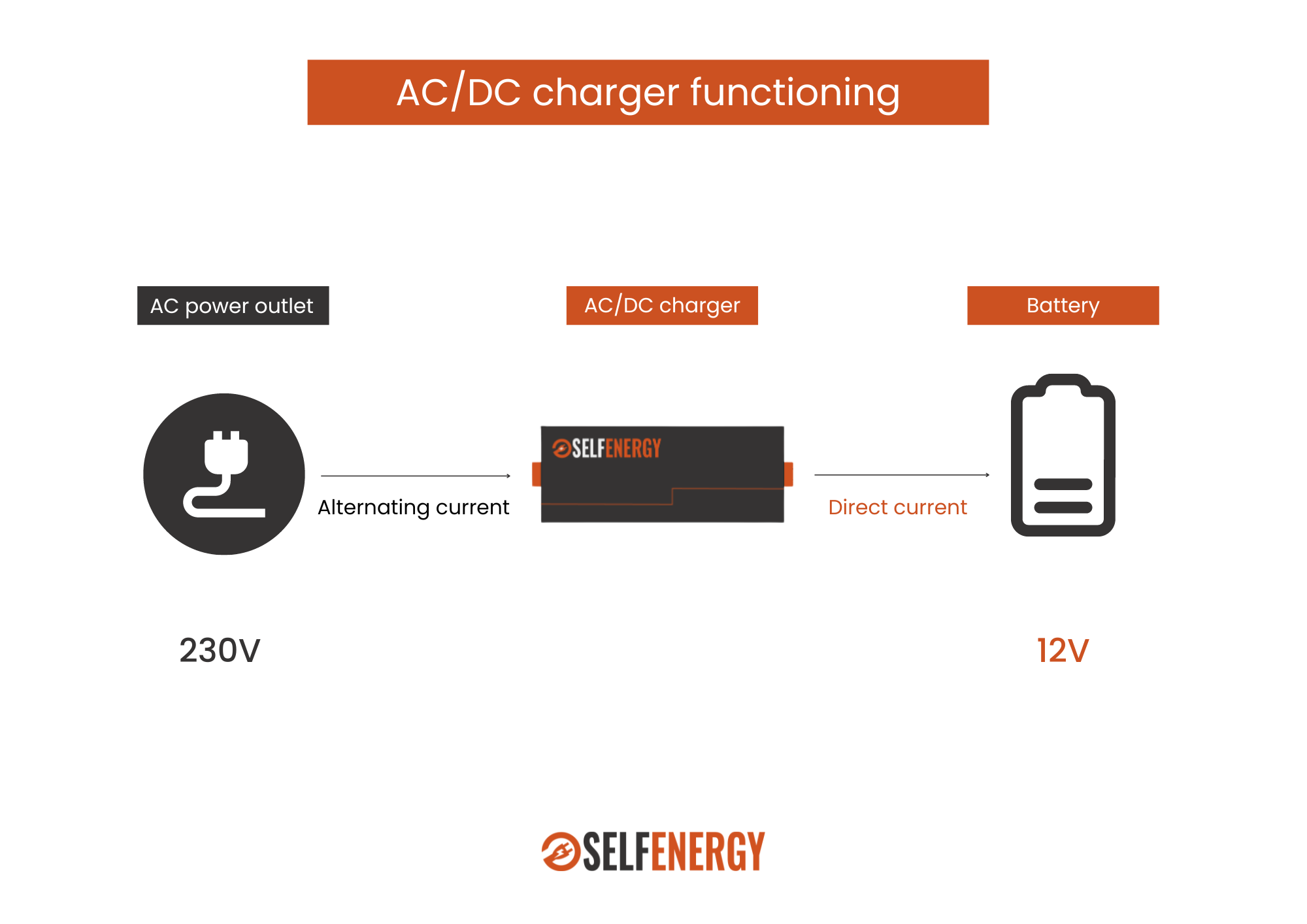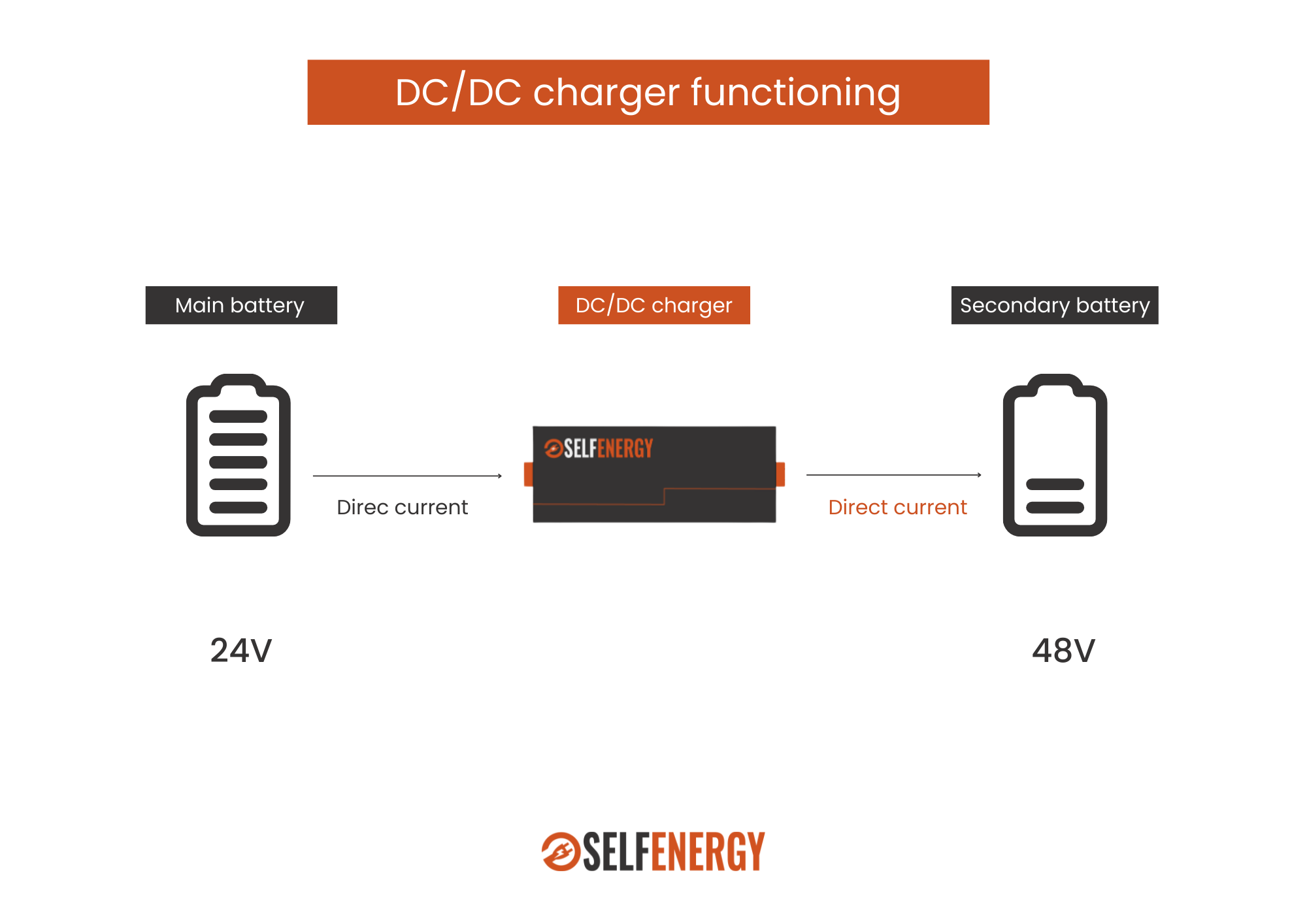Smart battery chargers: why you should choose Selfenergy solutions?
Smart battery chargers are becoming increasingly popular for recharging the batteries of all electronic devices and electric vehicles. However, with the multitude of solutions on the market, it can be difficult to select an efficient charger that suits your needs.
In this article, we will detail the added value and advantages of the intelligent battery chargers developed by Selfenergy in order to assist you in your project.
How a smart battery charger works
First of all, what is a smart battery charger and how does it work?
Unlike a standard charger, the smart charger uses advanced control algorithms to optimise battery performance, safety and life.
This type of charger is therefore effective in two applications:
- Recharging the on-board battery from a mains socket in industrial applications, electric bicycles or electric vehicles, known as an AC/DC smart charger
- Recharging an auxiliary battery from a main battery: DC/DC intelligent charger-converter, the DC/DC converts a direct current (DC) into another direct current.
These two categories of smart chargers are different and have their own characteristics.
The special feature of smart chargers is their ability to communicate. The software they contain enables them to retrieve key information on the state of the battery, in particular its capacity, voltage and cell temperature, in order to adapt their operation accordingly.
Selfenergy takes advantage of each of the characteristics of smart chargers in order to develop innovative high-efficiency solutions adapted to each need.
The advantages of Selfenergy’s smart battery chargers
Optimising the life of the battery
The main factor in the ageing of a battery is the rise in temperature of the cells. This overheating can occur especially during charging.
Selfenergy’s intelligent battery chargers regulate the battery’s charge by communicating with its BMS (Battery Management System). The BMS is an electronic management board linked to the battery that monitors its operation by collecting important information such as the SOH (State Of Health), the SOC (State Of Charge) or the cell temperature.
By taking into account the information transmitted by the BMS, the intelligent charger adapts its charging current to the temperature of the cells and enables the battery to be charged efficiently. In the event of high temperatures, for example, it is able to adapt to respect the recommendations of the cells and thus optimise the life of the battery.
A standard battery charger has to make a compromise between :
- A slow but safe charge to optimise battery life
- A fast but aggressive charge for the cells and therefore with a strong impact on the life of the battery
The particularity of the intelligent chargers developed by Selfenergy lies in their ability to communicate directly with the battery via the BMS. Thanks to this communication, the chargers optimise the battery’s charging performance in real time by maximising the charging speed without degrading the battery.
Optimising battery safety
In order to optimise the safety of a battery, Selfenergy implements an additional charging phase in the development of its intelligent chargers: the “acceptance” phase.
This phase comes at the beginning of the battery charging process and complements the classic “Boost-Absorption-Floating” charging profiles and allows to start a very gentle charge and to make sure that the battery and the wiring are defect-free.

In addition, the charging voltage of Selfenergy’s intelligent battery chargers is fully adjustable according to the electrochemistry and characteristics of the battery. The set end-of-charge voltage can never be exceeded, thus avoiding any risk of overcharging the cells and therefore of thermal runaway.
Optimal efficiency for better energy conversion
Selfenergy’s smart battery chargers guarantee an efficiency of up to 97% without any active cooling system.
This high efficiency is the result of several factors working together to dissipate the maximum heat and limit losses during energy conversion. These include the use of the most advanced electronic components (drivers and MOS) on the market and an innovative chopping system.
At Selfenergy, we develop customised smart battery chargers adapted to all your technical needs (energy sources, space optimisation, power rating, etc.) whatever your industry.
Would you like to learn more about our smart chargers? Contact our experts.

